
A hamburger, or simply burger, is a food consisting of fillings—usually a patty of ground meat, typically beef—placed inside a sliced bun or bread roll. Hamburgers are often served with cheese, lettuce, tomato, onion, pickles, bacon, or chilis; condiments such as ketchup, mustard, mayonnaise, relish, or a "special sauce," often a variation of Thousand Island dressing; and are frequently placed on sesame seed buns. A hamburger patty topped with cheese is called a cheeseburger.
The following outline is provided as an overview of and topical guide to meals:

Costa Rican cuisine is known for being fairly mild, with high reliance on fruits and vegetables. Rice and black beans are a staple of most traditional Costa Rican meals, often served three times a day. Costa Rican fare is nutritionally well rounded, and nearly always cooked from scratch from fresh ingredients. Owing to the location of the country, tropical fruits and vegetables are readily available and included in the local cuisine.

Fast food is a type of mass-produced food designed for commercial resale, with a strong priority placed on speed of service. It is a commercial term, limited to food sold in a restaurant or store with frozen, preheated or precooked ingredients and served in packaging for take-out/take-away. Fast food was created as a commercial strategy to accommodate large numbers of busy commuters, travelers and wage workers. In 2018, the fast food industry was worth an estimated $570 billion globally.
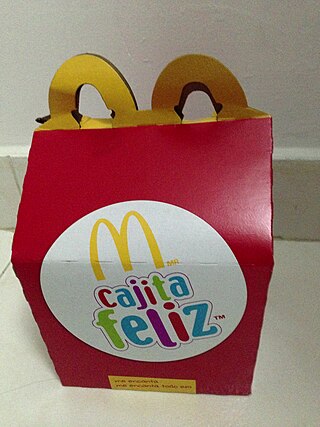
A Happy Meal is a kids' meal usually sold at the American fast food restaurant chain McDonald's since June 1979. A small toy or book is included with the food, both of which are usually contained in a red cardboard box with a yellow smiley face and the McDonald's logo. The packaging and toy are frequently part of a marketing tie-in to an existing television series, film or toyline.

Saimin is a noodle soup dish common in the contemporary cuisine of Hawaii. Traditionally consisting of soft wheat egg noodles served in a hot dashi garnished with diced green onions and a thin slice of kamaboko, modern versions of saimin include additional toppings such as char siu, sliced Spam, sliced egg, or shredded nori. When Chinese dumplings are added to the noodle soup, it is seen on menus as the heartier wonton min. All saimin establishments have their own, often secret recipe for the soup base, but primarily use kombu and dried shrimp as major ingredients. Common table condiments mixed in the saimin broth are Chinese hot mustard and soy sauce, added in small quantities according to each individual's taste. Many local residents of Hawaii also enjoy barbecued teriyaki beef sticks (skewers) or American hamburgers as a side dish.
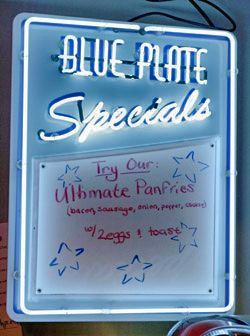
A blue-plate special is a discount-priced meal that usually changes daily: a term used in the United States and Canada by restaurants, especially diners and cafes.
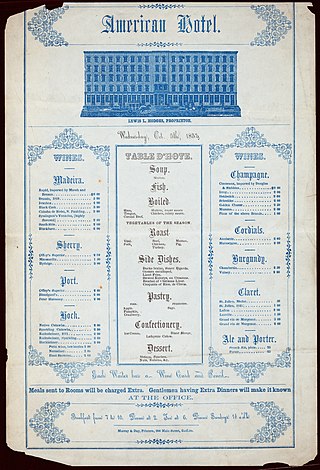
In restaurant terminology, a table d'hôte menu is a menu where multi-course meals with only a few choices are charged at a fixed total price. Such a menu may be called prix fixe. The terms set meal and set menu are also used. The cutlery on the table may also already be set for all of the courses.
A side dish, sometimes referred to as a side order, side item, or simply a side, is a food item that accompanies the entrée or main course at a meal.
A value meal is a group of menu items at a restaurant offered together at a lower price than they would cost individually. They are common at fast food restaurants. A typical value meal includes a main dish, a side dish and a soft drink. Value meals are a common merchandising tactic to facilitate bundling, up-selling, and price discrimination. The perceived creation of a "discount" on individual menu items in exchange for the purchase of a "meal" is also consistent with the Loyalty Marketing school of thought. Additionally, the term is based on value theory, which utilizes certain marketing tactics to encourage people to spend more money than they originally intended on their purchase.

In the cuisine of the Southern United States, a meat and three restaurant is one where the customer picks one meat from a daily selection of three to six choices and three side dishes from a list that may include up to a dozen other options.

Rice and beans, or beans and rice, is a category of dishes from many cultures around the world, whereby the staple foods of rice and beans are combined in some manner. The grain and legume combination provides several important nutrients and many calories, and both foods are widely available. The beans are usually seasoned, while the rice may be plain or seasoned. The two components may be mixed together, separated on the plate, or served separately.

Carne asada fries are a local specialty found on the menus of restaurants primarily in the American Southwest, including San Diego, where it originated. The dish is also served at Petco Park and Dodger Stadium. By 2015, fast food chain Del Taco began to sell the item.
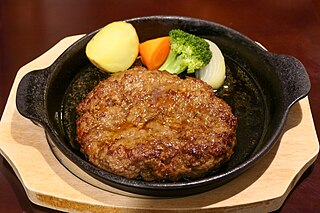
Hamburg steak is a patty of ground beef. Made popular worldwide by migrating Germans, it became a mainstream dish around the start of the 19th century. It is related to Salisbury steaks, which also use ground beef. It is considered the origin of the ubiquitous hamburger, when, in the early 20th century, vendors began selling the Hamburg steak as a sandwich between bread.
Restaurants fall into several industry classifications, based upon menu style, preparation methods and pricing, as well as the means by which the food is served to the customer. This article mainly describes the situation in the USA, while categorisation differs widely around the world.
Lunch is a meal eaten around the middle of the day. It is commonly the second meal of the day, after breakfast, and varies in size by culture and region.
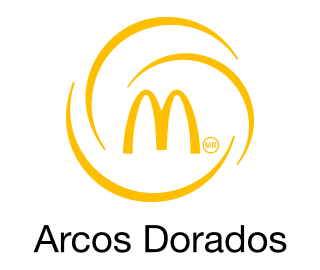
Arcos Dorados Holdings Inc. is a company that owns the master franchise of the fast food restaurant chain, McDonald’s in 20 countries within Latin America and the Caribbean. As of December 31, 2010, it represented 6.7% of McDonald's franchised restaurants globally. It has more than 81,250 employees, one of the region's leading employers of young, first-time job holders. It is the largest quick-service restaurant (QSR) chain in Latin America and the Caribbean serving over 4.3 million customers daily.

A meal is an eating occasion that takes place at a certain time and includes consumption of food. The names used for specific meals in English vary, depending on the speaker's culture, the time of day, or the size of the meal.

The soup and sandwich combination meal consists of a soup accompanied by a sandwich. It has been a popular meal in the United States since the 1920s. Some U.S. restaurant chains specialize in the meal, and it has been mass-produced as a prepared frozen meal.


















